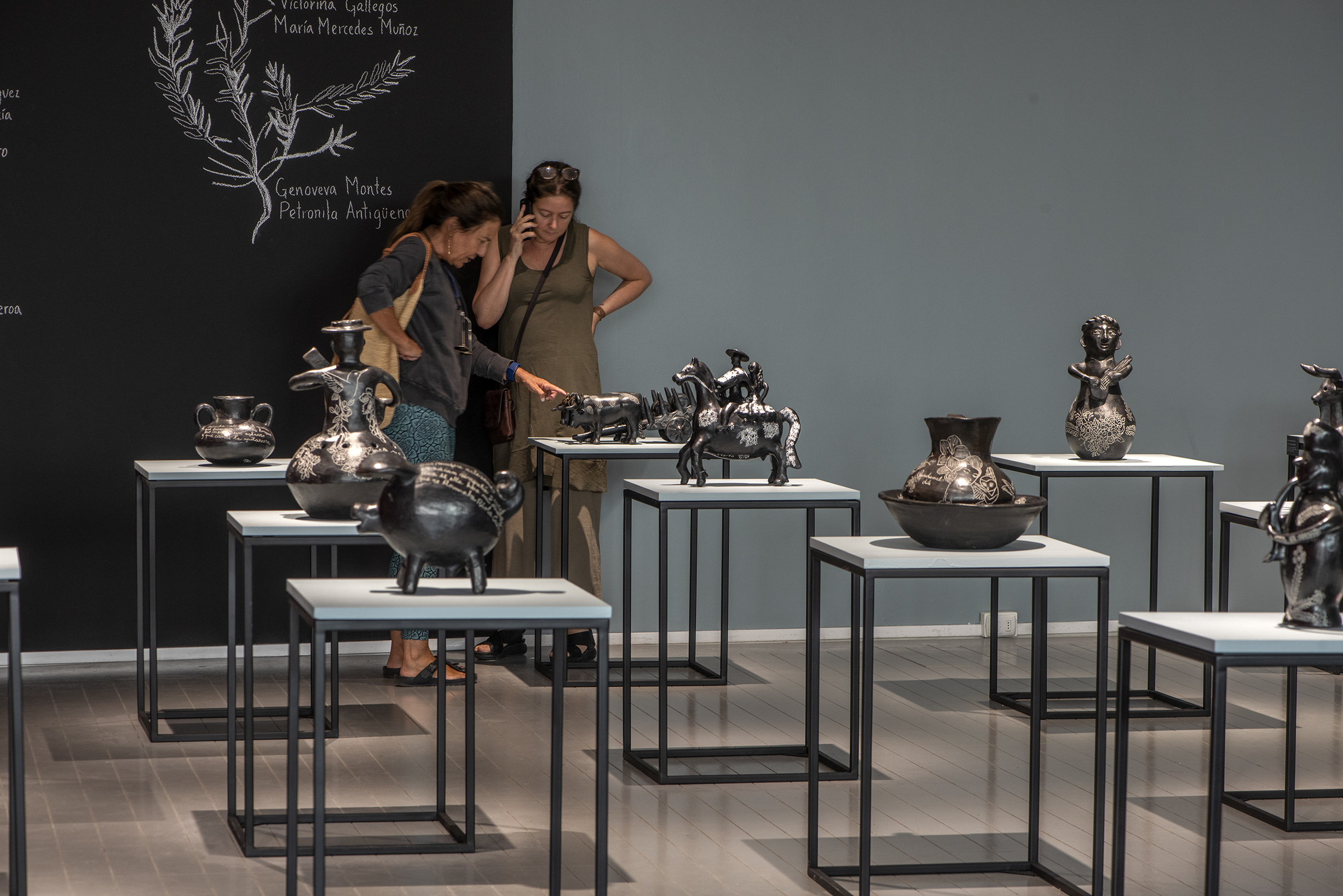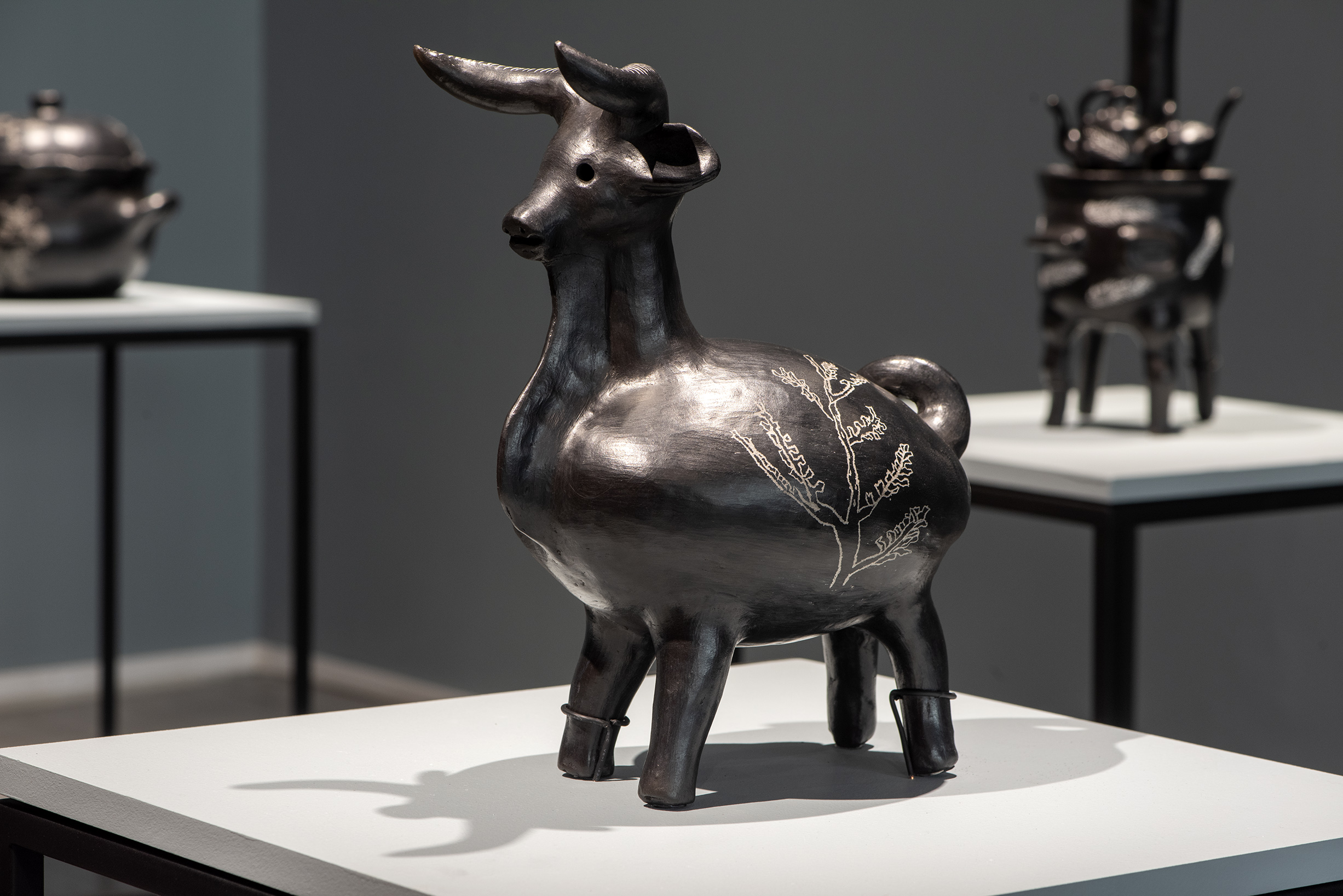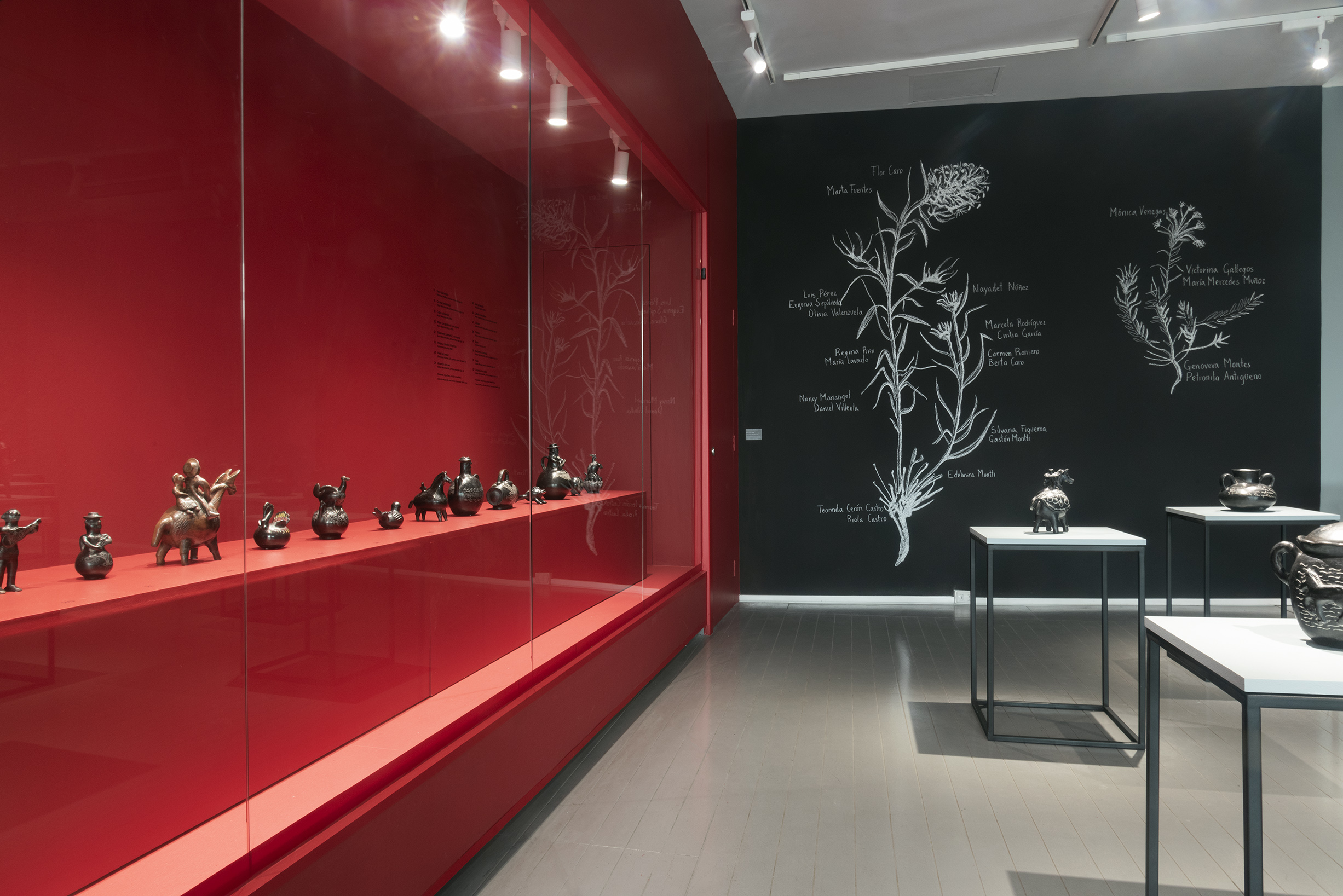Quinchamalium chilense
Quinchamalium chilense es una obra instalativa articulada en un diálogo entre la artista chilena Josefina Guilisasti y loceras de Quinchamalí, representantes de esta antigua tradición alfarera que postula a ser reconocida como Patrimonio de la Humanidad.
Josefina Guilisasti y la antropóloga Belén Roca se interiorizaron en la vida cotidiana de las mujeres de la localidad, internándose en la Región del Ñuble para familiarizarse con su historia, sus anhelos, y su ecosistema. Impulsaron a un grupo de mujeres y hombres a integrarse a las labores de taller de dibujo, e incluir como referente de sus diseños la planta del quinchamalí o Quinchamalium chilense, herbácea nativa que da nombre al pueblo y que forma parte de la medicina indígena. También se les instó, respetando sus tradiciones, a innovar dentro de las posibilidades que otorga el trabajo en greda.
![]()
Quinchamalí Quinchamalium chilense
Ilustración: Educarchile
A las obras resultantes de esa experiencia se suman otras piezas de la colección del Museo de Arte Popular Americano Tomás Lago, de incalculable valor patrimonial. De esta manera, la instalación pone en diálogo el presente y el pasado del noble oficio, transmitido de generación en generación.
En el video, que registra todo el proceso, las alfareras testimonian esta forma de vida y sustento familiar, cuya continuidad está en permanente peligro por amenazas medioambientales a su materia prima y a la precariedad en la que desarrollan su arte, dando cuenta de la necesidad de poner la atención en este lugar y resguardar su acervo cultural.
Josefina Guilisasti y la antropóloga Belén Roca se interiorizaron en la vida cotidiana de las mujeres de la localidad, internándose en la Región del Ñuble para familiarizarse con su historia, sus anhelos, y su ecosistema. Impulsaron a un grupo de mujeres y hombres a integrarse a las labores de taller de dibujo, e incluir como referente de sus diseños la planta del quinchamalí o Quinchamalium chilense, herbácea nativa que da nombre al pueblo y que forma parte de la medicina indígena. También se les instó, respetando sus tradiciones, a innovar dentro de las posibilidades que otorga el trabajo en greda.

Quinchamalí Quinchamalium chilense
Ilustración: Educarchile
A las obras resultantes de esa experiencia se suman otras piezas de la colección del Museo de Arte Popular Americano Tomás Lago, de incalculable valor patrimonial. De esta manera, la instalación pone en diálogo el presente y el pasado del noble oficio, transmitido de generación en generación.
En el video, que registra todo el proceso, las alfareras testimonian esta forma de vida y sustento familiar, cuya continuidad está en permanente peligro por amenazas medioambientales a su materia prima y a la precariedad en la que desarrollan su arte, dando cuenta de la necesidad de poner la atención en este lugar y resguardar su acervo cultural.
Quinchamalium chilense is an installation work articulated in a dialogue between Chilean artist Josefina Guilisasti and loceras from the small town of Quinchamalí who represent this ancient black pottery tradition now proposed to be recognized in Unesco's Intangible Cultural Heritage List.
Josefina Guilisasti and anthropologist Belén Roca got immersed in the daily life of these women, entering Chile's Ñuble Region to become familiar with its history, its hopes and its ecosystem. They encouraged a group of women and men to join a drawing workshop and include as a reference of their designs the plant of the quinchamalí or 'Quinchamalium chilense', a native herb that gives its name to the town and is also part of indigenous medicine. They were also encouraged, while respecting thir traditions, to innovate within the possibilities provided by the work on clay.
In addition to the works that resulted from that experience, there are also other pieces from the Museum of American Popular Art Tomás Lago's collection, all of which have an inestimable heritage value. Therefore, the installation engages in a dialogue between the present and the past of this noble craft, transmitted from generation to generation.
In the video which records the entire process, the potters testify about their way of life and family sustenance, whose continuity is in permanent danger due to environmental threats on their raw material and the precariousness in which they produce their craft, thus revealing the need of paying attention to this place and protecting its cultural heritage.
Josefina Guilisasti and anthropologist Belén Roca got immersed in the daily life of these women, entering Chile's Ñuble Region to become familiar with its history, its hopes and its ecosystem. They encouraged a group of women and men to join a drawing workshop and include as a reference of their designs the plant of the quinchamalí or 'Quinchamalium chilense', a native herb that gives its name to the town and is also part of indigenous medicine. They were also encouraged, while respecting thir traditions, to innovate within the possibilities provided by the work on clay.
In addition to the works that resulted from that experience, there are also other pieces from the Museum of American Popular Art Tomás Lago's collection, all of which have an inestimable heritage value. Therefore, the installation engages in a dialogue between the present and the past of this noble craft, transmitted from generation to generation.
In the video which records the entire process, the potters testify about their way of life and family sustenance, whose continuity is in permanent danger due to environmental threats on their raw material and the precariousness in which they produce their craft, thus revealing the need of paying attention to this place and protecting its cultural heritage.
Video documental Quinchamalium chilense – Centro Cultural La Moneda, 2019
Dirección y Edición: Josefina Guilisasti
Filmación: Cristian Soto
Sonido: Romina Arrigoni
Dirección y Edición: Josefina Guilisasti
Filmación: Cristian Soto
Sonido: Romina Arrigoni
Artisans / Artesanas
Victorina Gallegos
Teorinda Cerón
Flor Caro
Daniel Villeuta
Silvana Figueroa
Gaston Montti
Marcela Rodríguez
Mónica Venegas
Nayadet Nuñez
Eugenia Sepulveda
Carmen Romero
Regina Pino
Cintia García
Luis Pérez Sepúlveda
Nancy Mariangel
Teorinda Cerón
Flor Caro
Daniel Villeuta
Silvana Figueroa
Gaston Montti
Marcela Rodríguez
Mónica Venegas
Nayadet Nuñez
Eugenia Sepulveda
Carmen Romero
Regina Pino
Cintia García
Luis Pérez Sepúlveda
Nancy Mariangel
Artesanas de Quichamalí – Fotografía Francisca Reyes



























